Sunday Finals Snowboard Results
PHOTOS AT THE BOTTOM
A topographical phenomenon slithers down the mountainside where avalanches have raged since millennia. Its headwaters begin around 9000 feet where two parallel gullies catch the winter’s snowpack of an alpine headwall that thunders every time Mother Nature calls. They merge into one, and continue over 2000 vertical feet before morphing into a deep-walled chasm that spills into the valley floor far below. At Jackson Hole, it makes for a good race venue.
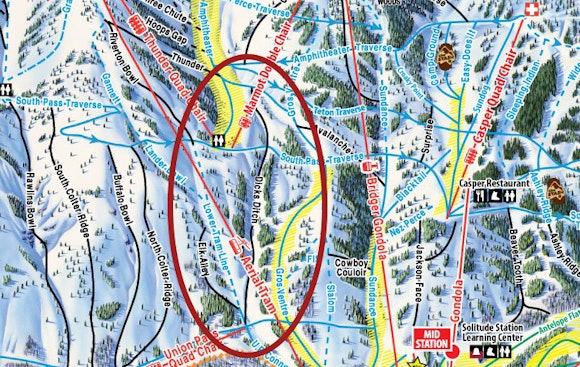
The history of this now famous landmark goes back to January 5, 1967. Three Jackson Hole patrolmen, Bob Sealander, Kent Hoopingarner and Richard Porter were conducting avalanche mitigation before the opening to the public. They left the summit of Rendezvous Mountain and made their way into the Amphitheater where this burgeoning avalanche gully forms the left boundary of the alpine meadow. During ski cuts, Porter fell in line behind Sealander high on one of the gully walls, but instead of continuing along the ridge, he then pointed his skis into the fall line. And everything changed.
According to The Snowy Torrents: Avalanche Accidents in the United States 1967-71, compiled by Knox Williams, Porter recounted his experience and rescue. “I looked uphill and saw the avalanche hurtling toward me,” he said. “There was no way to out-ski the slide.
“The avalanche ended as quickly as it had begun,” he said. “I could hear the muffled crunch above as the snow settled around me. It was solid, like being in a bag of wet cement. I couldn’t move at all, but I wasn’t uncomfortable…just a cozy feeling of being covered up with a thick soundproof quilt…I soon lapsed into unconsciousness.”
Porter was buried for more than hour before the team of patrollers exhumed him. He was grey, unconscious, and not breathing. One of the rescuers, Dr. Sam Southwick, immediately began mouth-to-mouth when they got to his airway. After a short hospital stay, he made a full recovery and was skiing five days later. Since the event, the gully forever bears his name: Dick’s Ditch.
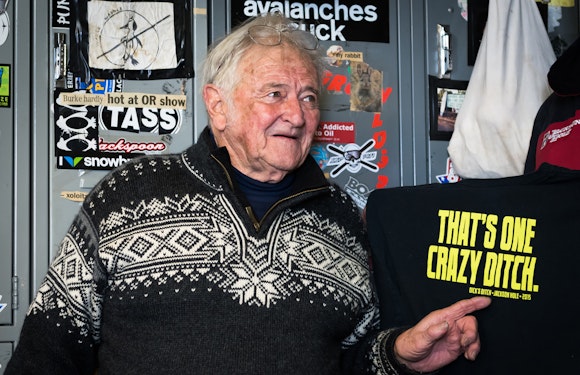
Fast forward to 1999. In an attempt to endear a growing population of snowboarders to Jackson Hole, the Dick’s Ditch Classic began as a banked slalom competition to celebrate and promote the aesthetics of snowboarding race craft using (naturally) Dick’s Ditch as the signature venue. The contest resembled an event from Washington’s Mt. Baker, in which competitors raced down a giant slalom with banked corners. Jackson locals’ competitive spirit flourished in the first several years that soon skiers and snowboarders alike began vying for glory in the event. And bragging rights.
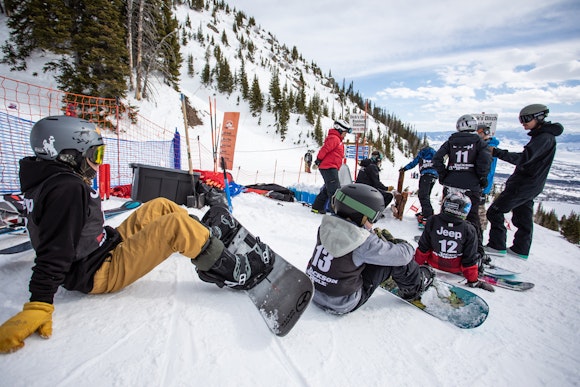
“It’s the street cred of the locals,” says Jess McMillan, winning female skier in 2006, who also happens to be a former free skiing champion “If you place in Dick’s Ditch, you’re good. It’s a notch on the belt.” There’s a lot of notches within Jackson Hole Resort history and lore. One is Corbet’s, one is S&S, or skiing one of the neighboring test pieces outside the resort’s boundaries. And Winning Dick’s (even placing high) is no joke, especially given the talent-soaked population of skiers and riders who flock to this mountain. “You have to be a really good athlete to do well in it, or you get eaten up.”
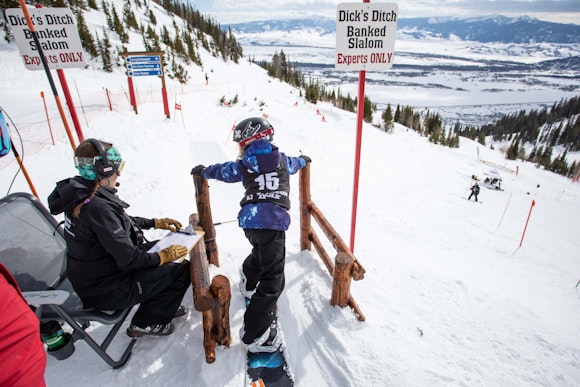
Why? Well, cuz. Dick’s isn’t just a locals’ series race event. It’s a go-for-broke, test your mettle against not only the clock, the course, but all your friends and rivals, while the immediate world watches on. It’s totally high school, so just accept it.
Some years the course is fast, smooth, and predictable—round turns, clean jumps, and sunny. Other years, it’s an icy hellscape, complete with the night terrors that haunted your childhood. Unforgiving, rugged and punishing to those who make mistakes, the unnerving course can chew up participants, and leave them with small cases of post-traumatic stress upon finishing—if, they finish. I’m told the race also has a down side.
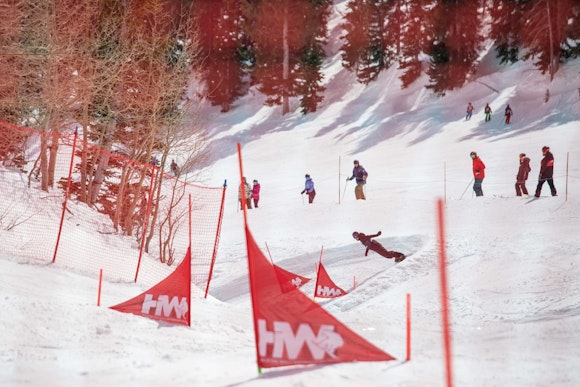
One-time member of the US Ski Team, Max Hammer, grew up in Jackson, and has topped the podium a few times. “First thing that comes to mind are the challenges,” he says. “It’s a [special] race because it’s both manicured, but also the lower ditch is untouched (save for the gates), so you really have to excel at skiing or riding on man-manipulated terrain, but you also need to be able to hold on during the bumpy, chundery (think of the ground below your feet as chopped up thunder) wildness that is the lower ditch too.” And, at the same time, the turn shape varies; it’s not like a GS course where all the radiuses are the same. There’s little turns, big turns, and you’ve got all the jumps. “So, it really favors someone who can ski or board everything well and can adapt really well.”
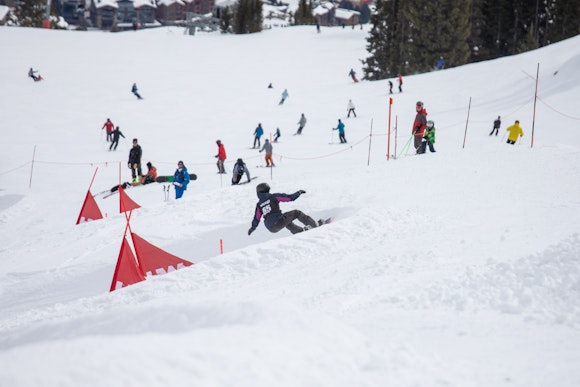
Jason Moore currently steers the Race Department at Jackson Hole Mountain Resort and has run the timing and racing since 2005. “The biggest thing about Dick’s is that it’s our event. It’s not a true banked slalom, it’s not a true boarder cross, it’s unique to Jackson Hole and the terrain of Dick’s Ditch, and I always look at it as a stand-alone event. Locals really get into it every year. And, just having that belt buckle around you… People know what it means.”
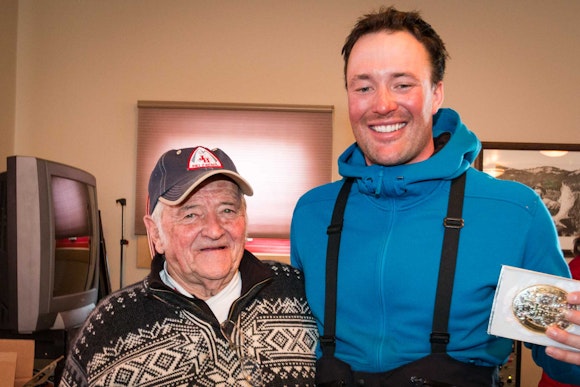
To the victors go the spoils. And those who win the Dick’s Ditch Classic are given highly touted custom belt buckles crafted by Montana Silversmiths, a gentle nod to the western heritage that colors the Dick’s Ditch mindset.
So, what does it take to perform well in Dick’s? “Turns out you need a lot of stamina,” says former world champion freeskier, and 2010 Ditch Winner Amy Jo Cargill. “You’re dying by the end of it.”
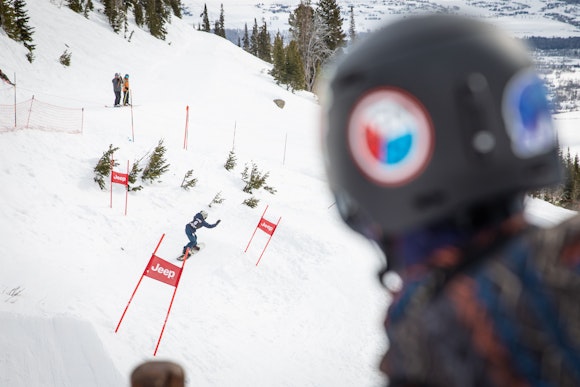
During the race, you’re basically in a very compressed position with your body; you’re standing pretty low the whole time, then you’re pressing out your feet for some of those turns, and you have that centrifugal, G-force sizzling your thighs. “You’re basically in that athletic squat position the whole time,” she says, “and you’ve got to get Oxygen to those quad muscles.”
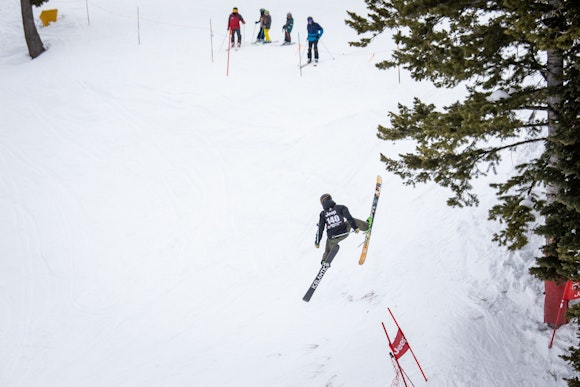
Cargill, who now works for Jackson Hole Ski Patrol, maintains you need quick decision-making skills, “because the terrain is so varied that jumps come at you, then a compression, an absorption, then the moto-style whoop-dee-doos. It’s mentally challenging, physically taxing and stimulating all that the same time.”

Much of Dick’s enduring popularity can be attributed to the myriad course variations the winter geography delivers each year. Weather and snow totals influence how the course architect Ranyon D’arge weaves the event into the landscape. D’arge himself has won the Masters Snowboard Class, and has long tried to yoke together challenge and fun when conceiving the course. “It’s always a balance,” he says. “But, luckily, we’ve always changed it over the years. It’s been one of the saving graces that it hasn’t been the same thing and hasn’t gotten the chance to get stale.”
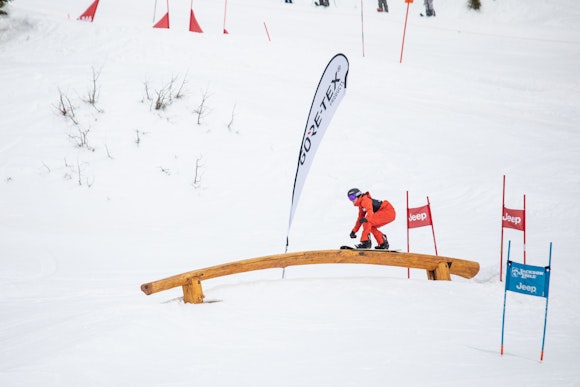
This year is no different. “We’ve been trying to keep it more natural and use less snowcat work,” says D’arge. “We’re trying to get more public to ride through the course, and build the features instead of a snowcat and diesel doing the work.” Normally, the course lasts about 800-1200 vertical feet, and start and stop locations are arbitrary, governed by weather and snow, beginning below Lupine Way and stopping by South Pass Traverse.
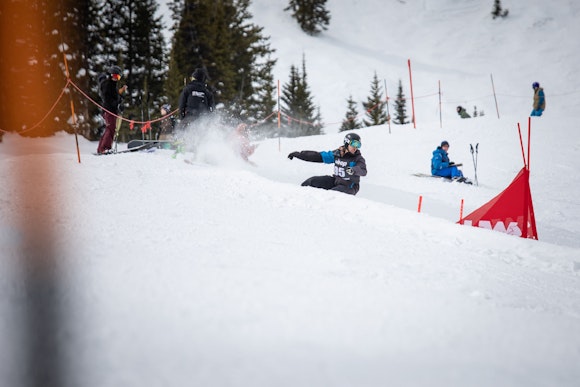
Some locals want a version called Super Dick’s, which would begin at the top of the headwall gullies, continue through the totality of the ditch, over South Pass and descend into the lower reaches of the gully, which resembles more of a nightmarish ravine akin to the Princess Bride’s fire swamp, and terminates at the bottom of lower Tram Line, adding another 1000 vertical feet to the course, doubling the amount of turns, jumps and challenges to competitors. But Jason Moore isn’t buying. “People are [already] completely out of breath,” he says. “And we’ve had competitors throw up at the finish-line. We would break people if we started from Lupine Way to the bottom of Bags Bowl.”
Photos by Chris Anderson


















